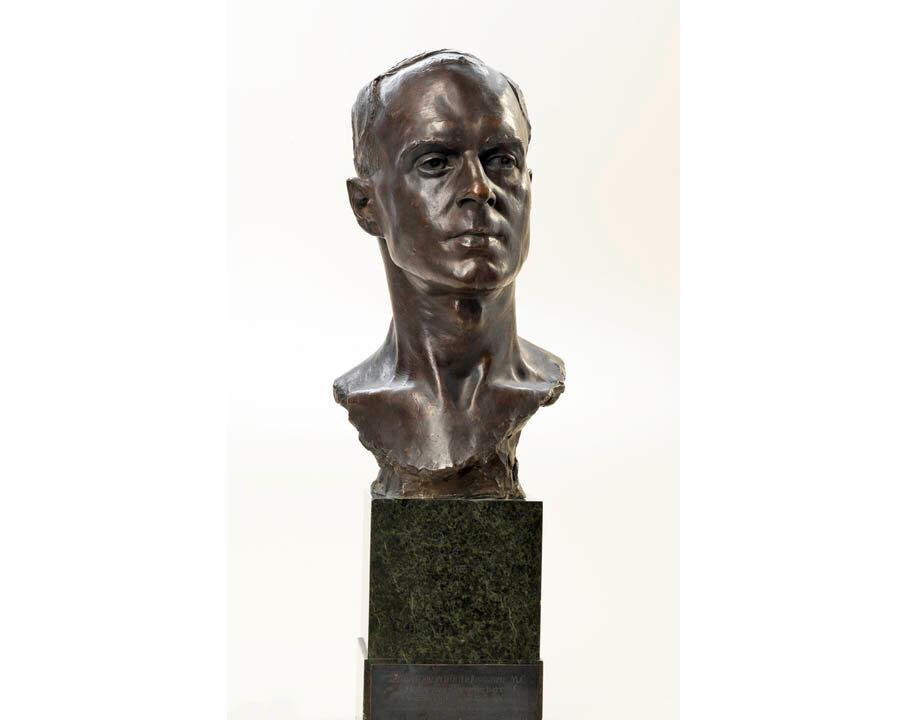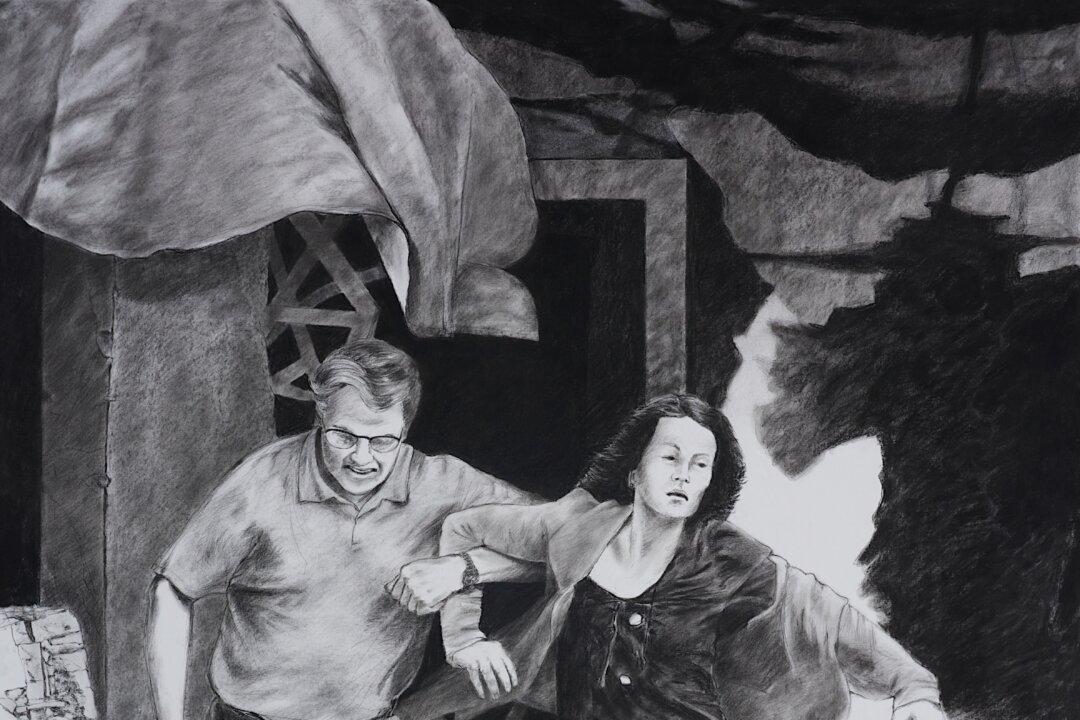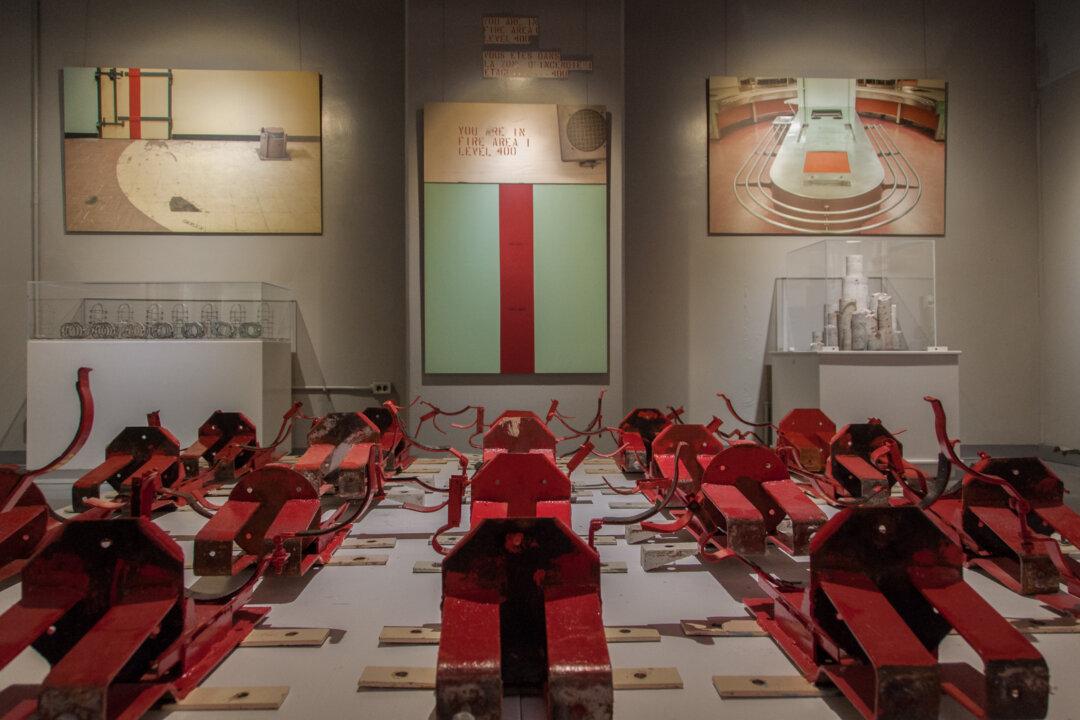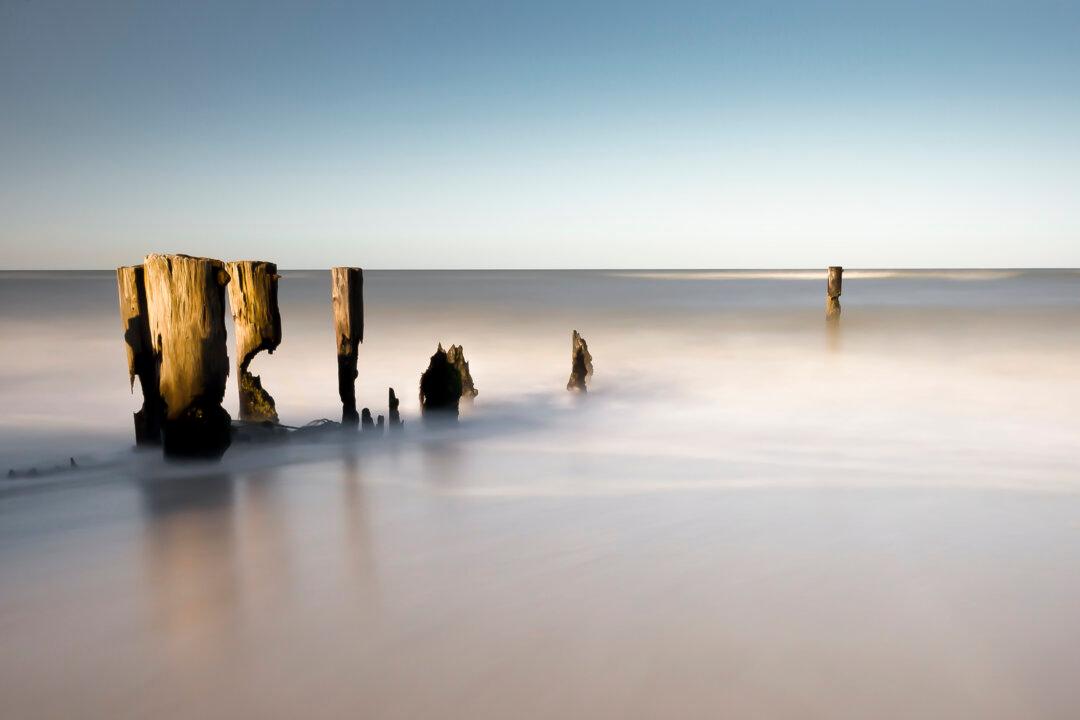A small exhibition of 12 sculptures of war art is now on display at the Canadian War Museum, drawn from the museum’s extensive Beaverbrook Collection.
The sculptures are all approximately the same height, 70-75 cm tall. All but one are of World War I figures, and all were cast in bronze following the end of the war. The only one not cast is a study in plaster, painted a bronze colour. Three of the artworks are portraits.
Two of the portraits are by British sculptor Francis Derwent Wood (1871-1926), who was a medical officer in WWI. Among his many duties, one task called particularly for a sculptor’s hands: it was the artist’s grim duty to make thin metal masks for soldiers whose faces had been sorely disfigured in battle. The masks are not displayed, however. The portraits are of Wood’s post-war busts of two soldiers, who are identified by name, rank, and heroic deed.
The third portrait, “Drummer Boy,” bears nobody’s name. It is a full-figure study of a young boy, scared and proud, walking with his drum. It was sculpted by Canadian artist Lionel Fosbery (1879-1956). In WWI, drummer boys were often little more than 12 or 14, even as young as 10.
The remaining nine figure studies on display are by Frances Loring (1887-1968) and Florence Wyle (1881-1968). Their sculptures are of workers—Canadians toiling in the factories and fields in support of the war effort. The sculptors were commissioned to do this work in 1918 by Lord Beaverbrook’s Canadian War Records program. Their work was cast in bronze immediately after the end of the war.
All but two of the workers depicted by Loring and Wyle are female. Look again. None are portraits of individuals. All have been modelled from the same figure.
Each worker is shown as a single, standing figure, young, slender, graceful, virginal. The work garments of all seven female workers hang simply over their frames—each a figure with small breasts, narrow hips. The two male workers in the display are also slender, young, graceful, but with longer legs and arms.
Wyle’s “Noon Hour,” for example, shows a young, slim woman drinking from a big jug. No time to sit down and rest. “Munitions Worker” by Wyle is a female figure carrying something heavy in her hands. Loring’s “The Shell Finisher” similarly depicts a young, slender woman in flowing trousers, carrying shells on her narrow shoulders. “The Furnace Girl,” also by Loring, leans far into the flame to keep the fires blazing hot.
There is a classical precedent for such figures, particularly the female workers as presented by Loring and Wyle.
In ancient Rome, a group of young girls, carefully chosen, tended the sacred flame of Vesta, guardian of the hearth fire. All virgins, they were called the “Vestal Virgins.” In art they were depicted carrying sacred vessels and implements in procession. All were the same—beautiful, perfect. As long as the fire flamed brightly, and as long as they remained virgins, the people of Rome, a city at war, believed their nation safe from conquest.
Both Wyle and Loring had a solid background in the ideas and forms of classical Greek and Roman art. Their work well shows the influence of their neo-classical art school training.
Born in the United States, the two met at the Art Institute of Chicago as students in 1906. They immigrated to Canada in 1913, settling in Toronto. Their friends and neighbours called them “the girls.” They were founding members of the Sculptors’ Society of Canada, and friends with many of the Group of Seven. Both women died in Newmarket, Ontario, a few weeks apart in 1968.
Although each sculpture displayed in “Ordinary People in Extraordinary Times” bears its artist’s name, little information concerning any of the artists is provided. None today is well-known. On the other hand, the work speaks for itself perfectly.
Maureen Korp, PhD is an independent scholar, curator, and writer who lives in Ottawa. Author of many publications, she has lectured in Asia, Europe, and North America on the histories of art and religions. Email: [email protected]





